Introduction To Rockfish
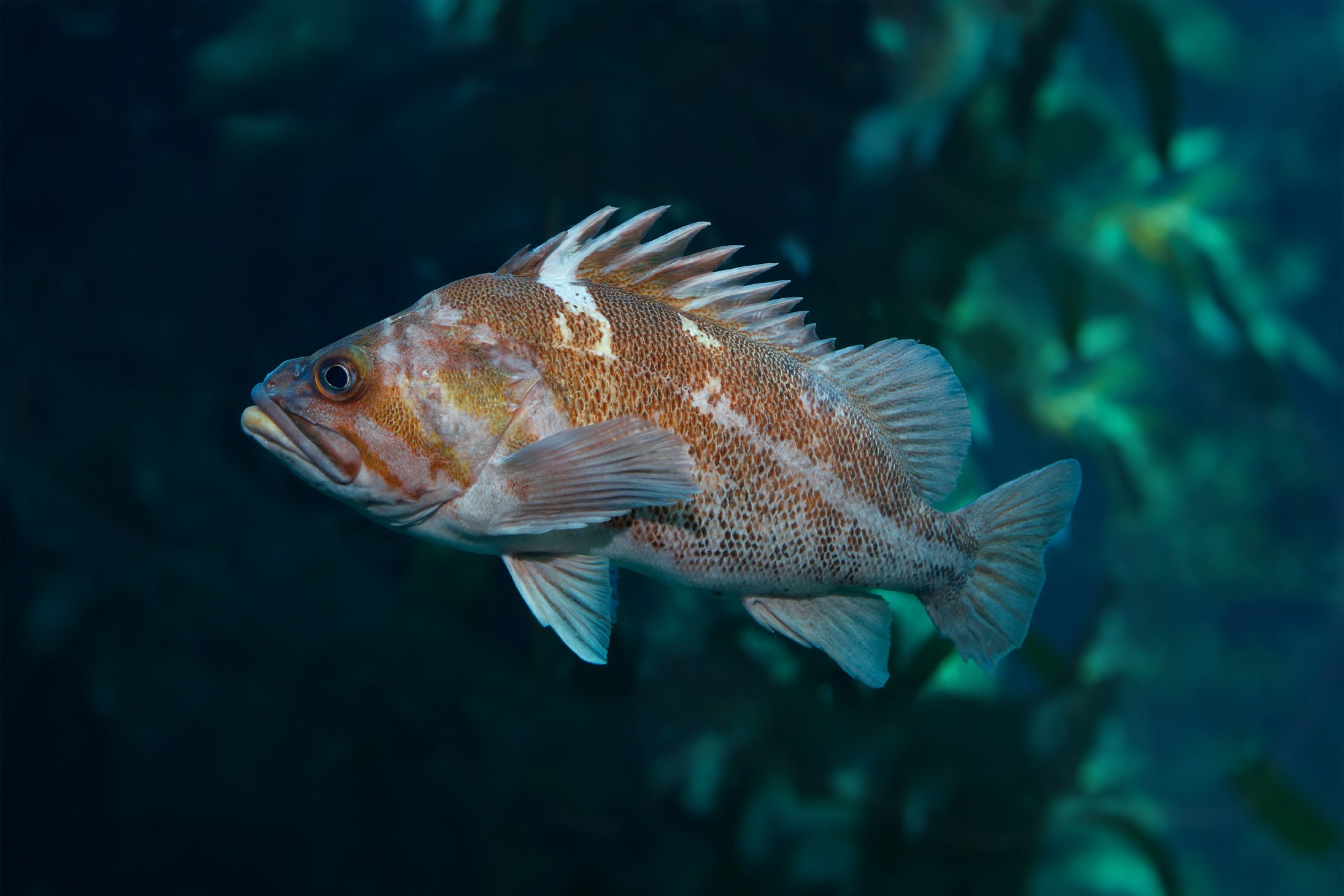
Rockfish is a type of fish known for its distinctive features, such as spines on its head and large scales. They are viviparous, meaning they give birth to live young instead of laying eggs. Rockfish are a diverse family consisting of approximately 100 different species, each varying in shape, size, and color. These fish can be found in a wide range of habitats, from rocky reefs to kelp forests. They are highly sought after by both anglers and seafood enthusiasts due to their delicious taste and versatility in cooking. Understanding the different varieties of rockfish is crucial for successful fishing and conservation efforts.
Overview Of Rockfish Species
Rockfish are a diverse group of fish species, with approximately 100 different types. They come in a wide range of colors, patterns, shapes, and sizes. Some common rockfish species include rosefish, yelloweye rockfish, and deep-water redfish. While they may have genetic similarities, each species has distinctive physical characteristics that set them apart. Understanding the variety of rockfish species is important for fishing, cooking, and identification purposes. By recognizing their unique traits, anglers can target specific species, and conservation efforts can be tailored to the needs of each type of rockfish.
Habitat And Behavior Of Rockfish
Rockfish are highly adaptable fish that can be found in a wide range of habitats. They are primarily found in rocky areas, kelp forests, and underwater canyons, but they can also be found in sandy and muddy bottoms. Rockfish are bottom-dwelling fish and are often seen hiding in crevices or caves for protection. They are known for their territorial behavior and will defend their chosen area vigorously. Rockfish are also known to be solitary, but they can form aggregations during their spawning season. Their behavior and habitat preferences can vary depending on the species, making them a fascinating group of fish to study and observe.
Black Rockfish
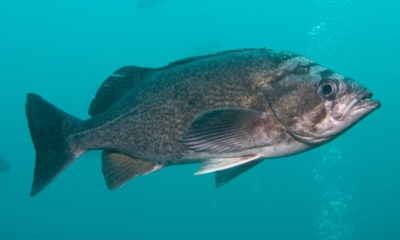
The Black Rockfish, also known as Sebastes melanops, is a popular species among anglers and divers alike. It is named for its predominantly dark gray to black coloration, with lighter tones of gray on the sides of its body. This species is found along continental shelves, nearshore shallow waters, and rocky habitats. Black Rockfish are known for their viviparous reproduction, giving birth to live planktonic larvae instead of laying eggs. They often form schools with other species, such as yellowtail widow or dusky rockfish. These adaptable fish are highly sought after for their delicious taste and are a prized catch for many fishermen.
Black Rockfish Physical Characteristics
The Black Rockfish, also known as Sebastes melanops, has distinct physical characteristics. It has a slender, elongated body that can reach a length of about 25 inches and weigh around 11 lbs. Their coloration is predominantly dark gray to black, with lighter gray tones on the sides of their body. These fish have rough scales and spines on their dorsal fins. The Black Rockfish has a broad, yellow stripe running along its side, adding a vibrant touch to its appearance. Its unique physical features make it easily recognizable among other rockfish species.
Black Rockfish Distribution And Diet
Black Rockfish can be found along the coasts of the Pacific, from Alaska all the way down to the coasts of Southern California. They are commonly found in rocky areas and kelp forests, where they seek shelter and prey. These fish have a diverse diet that includes small fish, shrimp, crabs, and other invertebrates. They are opportunistic feeders and can adapt their diet based on the availability of food. The Black Rockfish’s distribution and versatile feeding habits contribute to their success in coastal ecosystems.
Tiger Rockfish
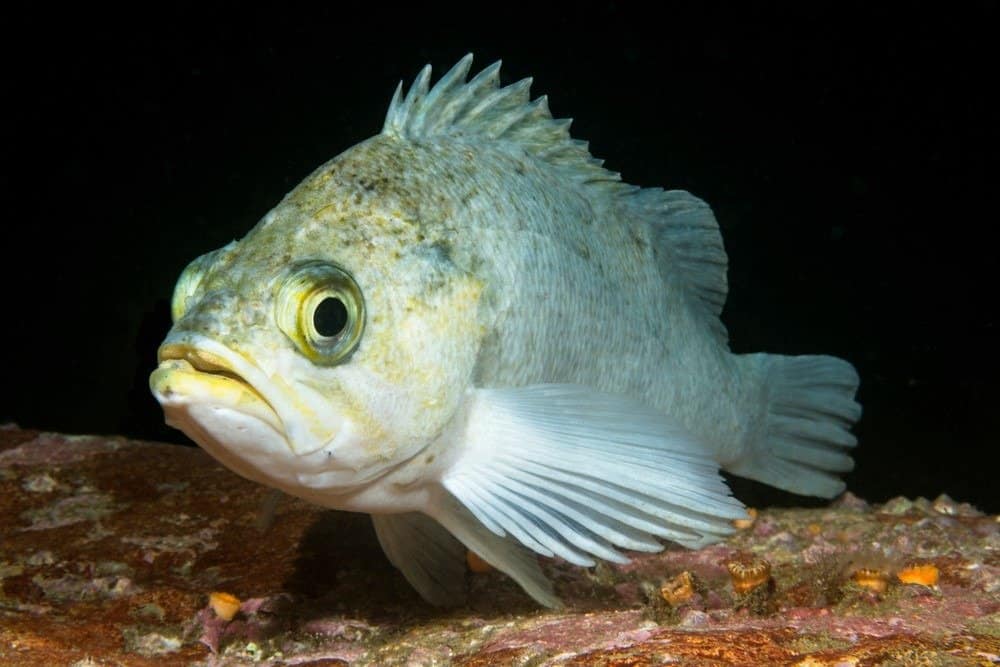
Tiger Rockfish, also known as Sebastes nigrocinctus, is easily recognizable due to its vibrant orangish-red color and black vertical stripes, resembling the appearance of a tiger. With a robust body adorned with prominent spines along its head and dorsal fins, this species can grow up to a maximum length of 24 inches (60.9 cm). As a formidable predator, the Tiger Rockfish preys on various invertebrates and fish. It is highly sought after by sports fishermen, both for its trophy qualities and delicious meat. The Tiger Rockfish adds excitement to fishing expeditions with its striking appearance and strong fighting abilities.
Tiger Rockfish Appearance And Coloring
The Tiger Rockfish, also known as Sebastes nigrocinctus, is easily recognizable due to its vibrant orangish-red color and black vertical stripes, resembling the appearance of a tiger. With a robust body adorned with prominent spines along its head and dorsal fins, this species can grow up to a maximum length of 24 inches (60.9 cm). Its pink color turns white on the underbelly, creating a striking contrast. The dark vertical black stripes give it a distinct and captivating appearance, making it a favorite among sport fishermen and a sight to behold in the ocean.
Tiger Rockfish Habitat And Feeding Habits
Tiger Rockfish, also known as Sebastes nigrocinctus, thrive in rocky areas and kelp forests along the North American Pacific coast. They prefer depths ranging from 60 to 200 feet (18 to 61 meters), but can sometimes be found at shallower depths during certain times of the year. These fish are opportunistic feeders, preying on a variety of small marine organisms such as crabs, shrimp, and small fish. Their powerful jaws and sharp teeth allow them to consume their prey whole, making them effective hunters in their marine environment.
Canary Rockfish
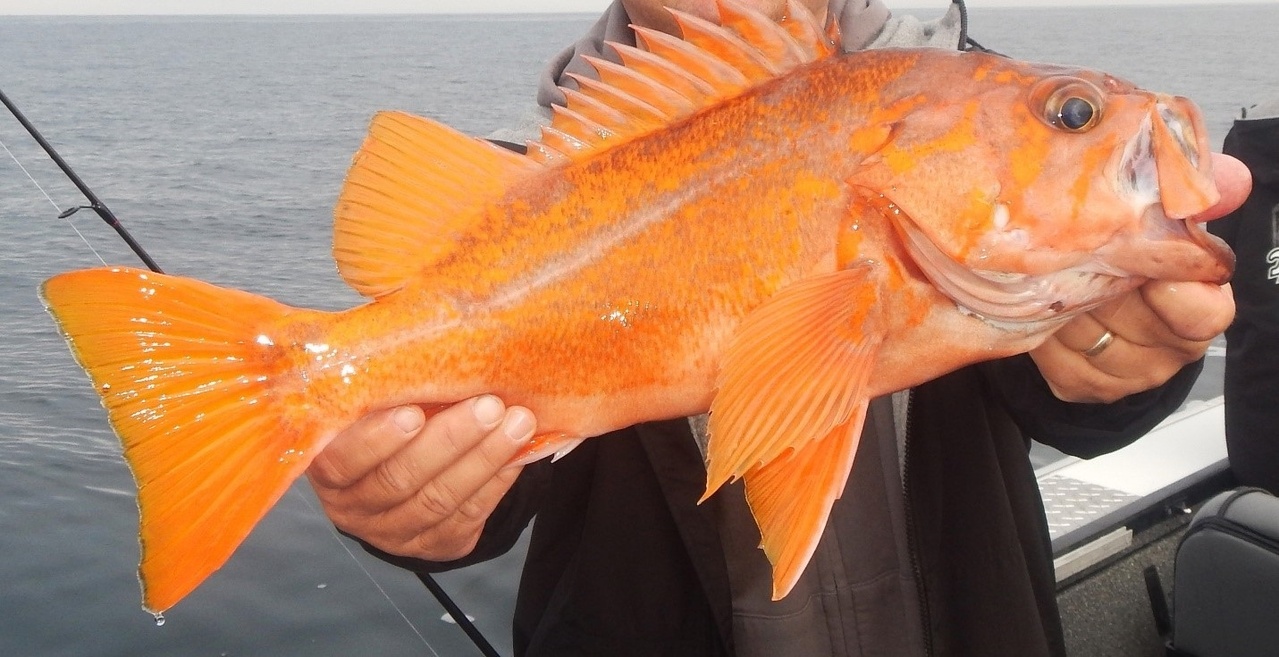
Canary Rockfish, scientifically known as Sebastes pinniger, are large fish with distinctive mottled yellow and orange markings on their tops and light gray coloring on the bottom, accompanied by a gray lateral line. These rockfish have a diverse diet, feeding on invertebrates and small fishes like anchovies, sanddabs, and other rockfish species. They are capable of producing around 9 million eggs, which is considerably more than many other rockfish species. Canary Rockfish are commonly found in the range between Punta Colnett in Baja California and the Western Gulf of Alaska, with a higher concentration off the coast of central Oregon. Conservation efforts and fishing regulations aim to protect this species and ensure sustainable fishing practices.
Canary Rockfish Distinctive Features
Canary Rockfish are easily recognized by their distinctive features. They have bright yellow to orange mottled bodies with undertones of gray, giving them a vibrant appearance. Another distinguishing characteristic is the presence of three orange stripes across their bodies. These markings contrast with the gray lateral line that runs along their sides. Together, these features make the Canary Rockfish stand out among other rockfish species. Their unique coloration and markings make them easily identifiable to both researchers and fishermen alike.
Canary Rockfish Conservation Status And Fishing Regulations
The conservation status of Canary Rockfish is a cause for concern. They are currently classified as a “Species of Concern” by the National Marine Fisheries Service due to overfishing. In order to protect their population, fishing regulations have been put in place. Size limits and bag limits are enforced, with a minimum size requirement of 15 inches and a daily bag limit of 3 fish per person. Additionally, fishing for Canary Rockfish is prohibited within certain conservation areas. These regulations are crucial for maintaining the sustainability of the species and ensuring their continued existence in the future.
Vermilion Rockfish
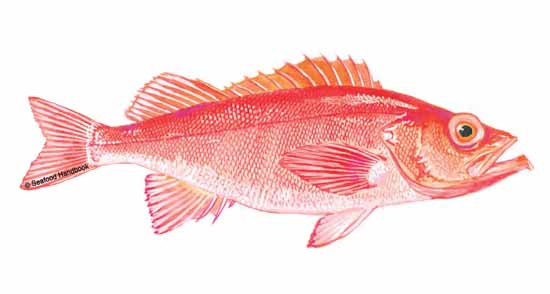
The Vermilion Rockfish, also known as the vermilion seaperch, red snapper, red rock cod, and rasher, is a vibrant and striking rockfish species. It is characterized by its bright red body and fins, which are marked with black and grey mottling on its back and sides. Growing up to 36 inches in length, the Vermilion Rockfish has a moderately deep and compressed body with a curved profiled head and a large mouth. This species is commonly found in the waters along the West Coast of the United States. It is a popular fish among anglers for its beautiful appearance and delicious taste.
Vermilion Rockfish Anatomy And Size
Vermilion Rockfish, also known as vermilion seaperch or red snapper, have a distinctive anatomy and size. They have a moderately deep and compressed body with a curved profiled head and a large mouth. The Vermilion Rockfish can grow up to 36 inches in length. They are characterized by their vibrant red color with black and grey mottling on their back and sides. These striking fish have white lateral lines and silvery pink blotches on their body. They are known for their beauty and are a fascinating species to observe.
Vermilion Rockfish Spawning And Life Cycle
Vermilion Rockfish have a fascinating spawning and life cycle. They are viviparous, meaning that they give birth to live young rather than laying eggs. The females produce batches of eggs that are fertilized internally by the males. The eggs develop inside the female’s body until they hatch and the live young are released. The juveniles then undergo a pelagic phase, where they drift with ocean currents for several months before settling into rocky habitats. As they grow, they transition from red to the vibrant red coloration of the adults. This unique life cycle ensures the survival of the species.
Conclusion

In conclusion, exploring the varieties of rockfish reveals the fascinating diversity within this group of fish. From the black rockfish with its striking physical characteristics to the tiger rockfish with its vibrant coloring, each species has its own unique traits and habitats. It is important to prioritize the conservation of rockfish populations and practice sustainable fishing methods to ensure their continued existence. By understanding and appreciating the different species of rockfish, we can work towards preserving their populations for future generations to enjoy.
Benefits Of Consuming Rockfish
Rockfish is not only delicious but also packs a nutritional punch. As a good source of protein, it helps build and repair tissues in the body. Rockfish is also rich in omega-3 fatty acids, which are essential for brain health and reducing inflammation. Additionally, it contains various vitamins and minerals, including vitamin D, calcium, potassium, and selenium, which support overall health. Incorporating rockfish into your diet can promote heart health, improve cognitive function, boost immune system, and aid in proper bone development. With its numerous health benefits, rockfish is a great choice for a nutritious meal.
Sustainable Fishing Practices For Rockfish
Sustainable fishing practices for Rockfish are crucial for ensuring the long-term availability and preservation of this beloved seafood. To protect rockfish populations and maintain healthy ecosystems, fishermen and seafood industries must adhere to responsible fishing methods. This includes implementing fishing quotas, size limits, and seasonal restrictions to prevent overfishing and allow for population regeneration. Additionally, using selective fishing gear, such as traps or hooks, helps minimize bycatch and preserve non-target species. By practicing sustainable fishing, we can enjoy the deliciousness of rockfish while safeguarding its populations for future generations.
FAQ About Rock Fish: Exploring Varieties Of Rockfish
Q: What are Rock Fish?
A: Rockfish are a type of fish that belong to the Sebastidae family. They are known for their vibrant colors, spines, and unique features like a large mouth and eyes.
Q: How many varieties of Rockfish are there?
A: There are over 100 different species of rockfish found in various parts of the world, with each species having its distinct characteristics and habitats.
Q: Where do Rockfish typically live?
A: Rockfish are commonly found in rocky areas, reefs, and underwater structures in both shallow and deep waters. They prefer colder waters and are often seen along the coasts of North America.
Q: What do Rockfish eat?
A: Rockfish are carnivorous and feed on a diet of smaller fish, crustaceans, mollusks, and other marine organisms. Their diet varies depending on the species and their feeding habits.
Q: Are all Rockfish safe to eat?
A: While most rockfish are safe for consumption and are popular in seafood dishes, some species may contain high levels of mercury, especially larger and older individuals. It’s essential to check for advisories on specific species before consuming them.
Q: How can one identify different types of Rockfish?
A: Each species of Rockfish has unique features like color patterns, spines, markings, and fin shapes that can help in identifying and distinguishing them from one another. Field guides and online resources can also aid in identification.
Q: Are Rockfish populations sustainable?
A: Due to overfishing and habitat destruction, some species of Rockfish have faced population declines and are considered vulnerable. Sustainable fishing practices and conservation efforts are essential to protect and preserve Rockfish populations for the future.

We are introducing OH! NANA, where culinary excellence meets sustainability! Our journey began with a passion for creating delicious, nutrient-dense dishes while minimizing waste and environmental impact. At OH! NANA, we believe that great taste and nutritional value can go hand in hand with responsible sourcing and production. Our commitment to delivering intense flavors and high nutritional value is paired with a dedication to reducing waste in every aspect of our operations. From sourcing fresh, locally-grown ingredients to implementing efficient kitchen practices, we strive to positively impact both your health and the health of our planet.